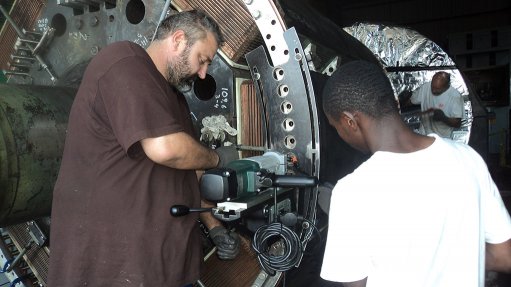
Even as cost cutting eats into maintenance budgets, companies can avoid catastrophic failures if they adopt the structured approach offered by specialists like Marthinusen & Coutts.
Marthinusen & Coutts is a division of ACTOM and according to the division’s projects and engineering services executive, Craig Smorenburg, an effective maintenance programme starts with proper buy-in from the client and their engineering team, as well as from the original equipment manufacturer.
“If all stakeholders understand and support the importance of a structured maintenance programme, then the next step is to agree on the most critical equipment in the client’s facility,” says Smorenburg. “These assets are the ones that must be most closely managed, as they impact directly on the whole operation’s success and sustainability.”
A further study is then conducted to ascertain which elements within each item are critical to maintain, and how the OEM maintenance guidelines must be applied.
“We then develop a strategic level-based maintenance plan, which considers all maintenance requirements and activities,” he says.
“We generally advise clients to conduct their weekly or monthly maintenance activities in-house, otherwise they lose touch with their equipment and lose the necessary skill.”
Marthinusen & Coutts promotes continuous improvement through engaging with its customers. Smorenburg says that this regular interaction between the division and the customer ensures that recommendations are addressed and action plans are realised. A Plan-Do-Check-Act (PDCA) cycle is also followed.
The division has developed its own level based maintenance schedule that incorporates OEM guidelines. This takes the best of each of the OEM requirements to come up with a maintenance schedule that is suitable for all equipment.
He emphasises the skills transfer that occurs when Marthinusen & Coutts technicians are on site with a customer’s maintenance staff.
“We encourage customers to involve their teams in the maintenance activities that we conduct, so they can benefit from transfer of skills from the specialist,” he says. “This gives them hands-on training on how the maintenance should be conducted.”
He says they have applied this approach on a number of sites around Africa, and have noticed a significant improvement in machine condition when they go back to conduct the six month inspections.